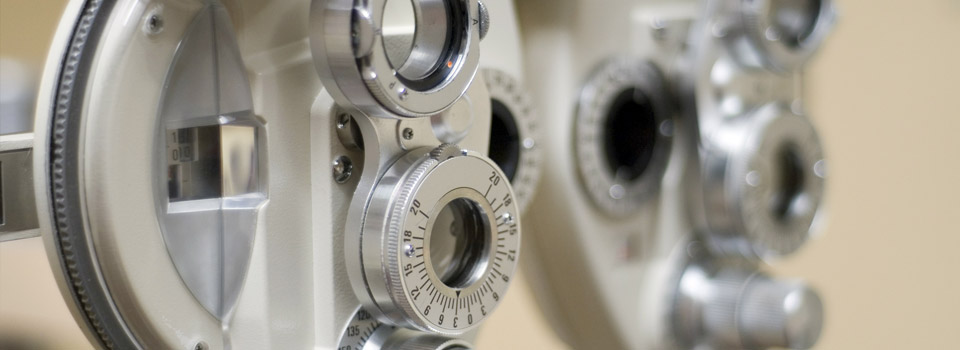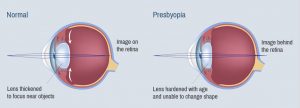We all know someone who had perfect vision all their life, but then began to need reading glasses as they entered their mid-40’s. Why does this happen?
First - a short explanation of how the human eye focuses for near vision. Behind the pupil of the eye is the lens. The lens is attached via small ligaments (called zonules) to the ciliary muscle. As the muscle contracts the lens changes shape and we are able to “accommodate”, or adjust our focus to different distances.
As we go thru life the lens is constantly bombarded by light energy and UV radiation. This causes stiffening of the lens, much the same as how plastic left outdoors will stiffen and go cloudy over time. Throughout our life the lens also grows constantly like our hair and our fingernails, gradually becoming larger and rounder. These joint processes of hardening and growing create a situation where the lens gradually looses it’s ability to change shape, resulting in the loss of near vision that we call presbyopia.
In our climate people often start to notice their near vision changing in the decade between age 40 and 50. In other parts of the world, the Caribbean for example, where the locals may not wear sunglasses much and are exposed to high levels of UV from the intense sun, hardening of the lens can be accelerated and the onset of presbyopia can be earlier in life.
--Dr. Lisa Scharf, BSc, OD


